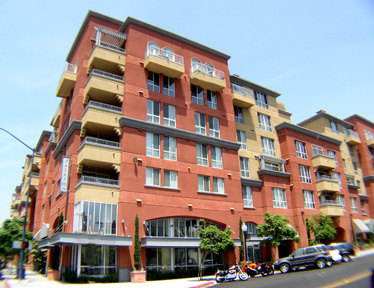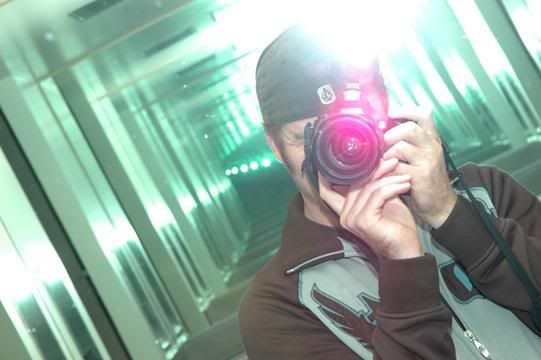New Orleans, Lousiana May2007

Last May (2007) I embarked on a journey that would eventually become one of the greatest experiences of my adult life. Devin (my best friend from high school) invited myself and 7 other buddies to all meet up in New Orleans for the city's annual Jazz Festival. It should be noted that Devin's father, John Quirk, is the New Orleans Historic National Jazz District Superintendent; meaning we were all going to roll VIP status, or at least be able to act like it. John and Priscilla (Devin's parents) were kind enough to let us crash at their pad.

John (pictured above) opening the door to his beautiful house, and welcoming the horde of men about to take over the city inside. This trip took place almost exactly 2 years after Katrina. You wouldn't know it however because much of the devastation was still evident throughout the city. Worse yet, the city has yet to rebuild it's defenses against another storm that size. I'll get to this a little later, in the mean time, see the Lyons-Quirk pad below, our home for the following 4 days.

Built in, i'm guess the 1800's, this house is a testament to how classy and cool a house can be. Not only did it survive Katrina, but it's still standing after a fire gutted it's interior. All the floors of the house were covered with rich, red wood planks, the ceilings were lined with amazingly detailed crown molding, and the everywhere you went you were reminded of the sophistication and character that was used to build homes hundreds of years ago. Nothing like the cookie cutter houses I'm used to in So-Cal. It's crazy to think that New Orleans and much of Louisiana were founded by pirates long before America was a country. The French cultural influence and outlaw, pirate life still has a firm grasp on everything in the area.
After unpacking our bags, settling in, and awaiting everyone's arrival from the airport, we headed out to a couple of the neighborhood bars. It must have been around 6 pm when Devin, Mikey, Biz, Scott, and myself headed outside for our first taste of "Nawlens". We headed, what I'm guessing was North, towards a small bar/pub that served some authentic cajun food and some awesome local beer. We all reeked of the gallons of bug spray Devin's mother doused us with. Good thing too, the humidity made walking more like swimming, and must have tripled the already massive amounts of bugs. As we walked down the street, some of the gravity of the city started to set in. These homes had been here for so long. All the trees had overgrown much of the side walks, making tunnels of leaves and mossy ferns.

Night was falling and the city seemed to be waking up. Lights were flicking on and people were slowly emerging out of their houses. We made it to the bar at about 6:30. From the outside looking in, the bar easily passed as a house, minus the flickering neon lights. Although, it appeared as though the owners lived upstairs from the bar, so perhaps it really was more house than bar.
We all stumbled inside, trying to escape the parade of mosquitoes following us from Devin's front door. We must have stunk like tourists; for the entire bar all the muttered conversations, the dish washing, even the music playing in the background stopped when we came in. Everyone looked at us for a minute, looked us over from head to toe, paused for an awkward couple of seconds, then resumed in their discussions of who knows what... probably the best way to broil a craw dad, the best grease for deep frying a squirrel, or some other salty topic. That seemed to be a consistent vibe I encountered throughout the city; the semi-annoyance of tourists accompanied by the ultimate acceptance of our tourism dollars. It was as though everyone sensed we would only be there a short time. Not to get all wax-philosophic on a city, but I think if a city can have a soul, New Orleans would be one of the traveler, passing but for just a moment through the city's immense history. Anyhow, I ate some crazy cajun dish that made me think people over use the word cajun when describing menu items. I washed it all down with a rather tastey brew, Abita Beer, which I highly recommend.

(image courtesy of: http://www.abita.com/images/wallpapers/amber02.jpg)
We paid our bill and headed back to Devin's pad. We walked back on one of the levees. I later found out that the same levee we were walking on was the same that had broken down the river, flooding much of the city, and well you know the rest of that story.
The next day Russ and Moudy, and Darin showed up. After a groggy start to the morning, we were all ready to tour the Bayou swamp land. Being that there were 8 of us, 2 cars were in order. Perhaps Devin's parents' largest mistake of the trip was allowing us to borrow these ill-fated vehicles. We headed out, driving through some of the coolest neighborhoods in America (and by coolest I mean most dilapidated, poverty stricken, crime ridden, ghettos) but at least the trees were pretty.

We were headed for Jean Laffite National Historic Park (the bayou swamp land). Our destination was promised to be filled with gators, snapping turtles, voodoo witches, and crazy forgotten souls who practiced cannibalism when they were bored. Little did we know something much more dangerous was in store for our poor, unfortunate souls.
When we arrived, in a clever disguise of the dangers of nature, a sweet little vine-rope swing welcomed us to the swamp.

Like a bunch of 8 year old, tarzan wannabe's we swung to and fro for about ten minutes. Happy and content we pressed on. After I finish this story you may never want to travel here, so in hopes of you stopping now, you should know, this park was absolutely beautiful. Unlike anyplace I have ever seen, the swamp truly is a mystical place that must been experienced.

The wooden walk ways seemed to float inches above the gator infested swamp. Weaving in and out of swamp trees and grassy plains, this brief mile hike had more diversity per foot than imaginable. The sounds surrounded us, the rustling of the reeds in the wind, the eery animal calls, the frogs, the drops of water, the trickling streams. It seemed so peaceful and enormous.
That was however, a short lived feeling.
To the southwest of us, a massive storm was rapidly developing, we could hear the tremendous booms of thunder and occasionally saw lightning flickering in the distance. Devin was the first to voice some concern saying something to the effect of "hey guys, so that storm looks like it's moving in, theres about a half mile left of this trail...you think we should keep going or turn back now?" We all paused for a moment to re-evaluate our situation. No one really said anything, so like a fool I uttered my famous last words, (i was thinking to myself, ohh just a half mile, thats no time at all, and who cares, we're already soaking in sweat from this damn humidity a little rain may be nice) "Ehh, the wind seems to be blowing that storm in the opposite direction of us, I doubt well see any of it" It must have been my cheap attempt at a meteorological forecast, but everyone bought it. I'm sure we all knew, in some way or another, that pressing on would get us a little wet, but no one, even Devin, could have predicted to what degree.
For the next ten minutes or so, it seemed I may have been right. The storm wasn't headed our way and just a little rain was falling...that was until the wind changed direction and started blowing with about hurricane force strength.

This was the last photo I managed to take before the sea's opened up above us. At about the same time we reached the further most point of the trail, the storm unloaded it's fury on us. I'm not talking about your typical rainy downpour here, it was seriously as if somebody dropped the pacific ocean on top of us. We started heading back, laughing at the ridiculousness of the situation. But, with each passing minute, the storm picked up, rained even harder, and the lightning was getting even closer, our laughing quickly turned from quiet concern to silent panic, and eventually led to an all our sprint back to the cars. Running/swimming for our lives we tore back down the same, once peaceful, trail that we entered on. The swamp was swelling with the downpour and slowly taking over our boardwalk. I just imagined that gator's thoughts while they ate our bug spray tasting bodies "freaking morons...the storm looks like its going the other way...wow...you guys went to Harvard?!" Stupid gator, that encouraged me to run harder.
It should also be noted at this point that 90% of this group of guys were Ivy League cross country runners. I can't speak for everyone else, but Devin is pretty much retardedly fast at long distance running, not special olympics retarded but Prefontane retarded. So as my gator induced, adrenaline sprint peeked at what I thought was blazing fast, 5 of the 8 were disappearing in the distance. Just Darin, Scott and I remained. For the next 2 to 3 minutes not one of the 3 of us said a word. We didn't want to come to terms with Darwin's survival of the fittest theory, we just wanted to make it to our cars before the swamp swallowed us alive. Right before all hope was lost, the car's emerged from the drenched tree line.
Stripping down to our shorts (I guess thinking we would minimize the amount of water allowed into the inside of the vehicles) we piled inside the cars. We all caught our breath, made sure we were all in one piece and started laughing hysterically thinking the worst was over. Everyone calmed down, somewhat sad our adventure was over, and we left the parking lot and headed back towards civilization. The road out of the park was pretty treacherous, the windshield wipers could barely keep up with the onslaught of rain, and the puddles were deepening by the second. And just as we thought we had made it through the danger zone, nature once again reminded us that we were in New Orleans, a city below the water line.
Darin, driving the family mustang was behind us, in the family truck. I remember looking back at that silver mustang filled with 4 half naked, fully grown men, thinking I would never see them again, as the water came seeping out from underneath the hood.

Streets were turning into rivers, and there seemed to be no where to go. Eventually Darin sailed the mustang into a parking lot thinking we could ride the storm out, and the water would eventually recede.
"Pull over! we lost darin!" I yelled to Devin. It was at that moment I realized everyone, every soul, had given me their cell phones for protection. I had the only backpack of the group, and it happened to be a champion of backpacks, swiss army's waterproof hiking back pack with an iPod pocket=) Crappy part being, there was now no way to get a hold of anyone in Darin's car. We were miles away from home, and no one knew how to get back.
So we pulled into a parking lot a couple blocks down the street. I decided I would make a run for it to Darin's car with a cell phone. Devin, Scott, and Mikey wished me luck, told me they loved me, and watched as I ran for Darin. The sidewalk was waist deep in water and the current was incredible, it was like the worst rip tide I have ever seen. I made for higher ground and started running on the front yards of the businesses on the way to Darin. I looked down from time to time as I sunk my feet into the depths of the abyss below me and saw bodies, small boats, live electrical wires and piranhas. Just as the stupidity of my plan was setting in, as well as the water setting into to Darin's phone rendering it ultimately useless, I saw Darin's boat of a mustang sail past me on the road back towards Devin. I remember locking eyes with Moudy in the front seat. As if we were brothers, being separated for the rest of our lives we watched as the car floated past. Moudy had one hand on the window, watching me with a solemn look of despair. Helpless, he must have thought I was going to die.
5 minutes later, we were reunited. I handed Darin his secretly destroyed cell phone, wished their boat luck, and got back in with Devin and the crew. We sailed on. The city as a whole suffered just as badly. It was later found out that the massive pumps used to pump water out of the city and back into lake Pontchartrian failed, and like Katrina, the city was filling with water. You could see the break down in systems designed to help people, emergency crews were left stranded, police couldn't block flooded roads, people were getting their cars stuck it was catastrophic failure everywhere. This was one single storm, not even close to a hurricane, and the city was in ruin again. Our little adventure culminated with an "off roading" adventure through backyards and medians. The city streets were shut down, and no one, anywhere was moving.

We made it back to Devin's house. Darin rejoiced by kissing the ground. Everyone else, stricken with the near death experience quietly filed inside and recovered. Retelling the story to John and Priscilla with 8 different versions proved one exciting story. We all washed up, rinsed off, hung our clothes out to dry and decided to go look at the city, after the storm passed through.
As if running from the death swamp wasn't enough, the track stars decided a jog was in order. (See photo at the beginning of the blog). I decided to ride Priscilla's bike and Darin decided to run Murphy, the dog. Scott was hidden in the house, assuming the fetal position and sucking his thumb in horror. While running (riding my ladies bike) along the levee some incredible views of the city could be seen. We even ran past a shipyard rebuilding some of the barges that deliver goods up and down the Mississippi.

I found this photo rather telling of the rebuilding effort. Here we were hours after devastation, and still work pressed on. I found it as a testament to the resilience of the entire town. New Orleans may be broken, but it has been here for hundreds of years, and as far as I can tell, it's not about to go anywhere.
The next day brought about the purpose of the trip; our attendance to Jazz Fest. Thankfully Priscilla bought us Saturday tickets as opposed to Friday tickets, seeing as how Friday's festival was all but ruined when the fairgrounds were turned into a small lake. We strolled down downtown on our way to the shuttles to the festival grounds. The city really is a beautiful urban area. Eclectic bars and mainstream upscale hotels are randomly found on every block. Every street was filled with character and charm, we definitely spent far too little time here.

We did happen to make an appearance at Burbon street this same night. However for the sake of all of the involved parties, I will leave out those details in fear of imprisonment and or loss of professional status.
Jazz fest however, was outrageous. While you ponder the next portion of the blog, perhaps you should be listening to this:
sweet zydeco music
Some 500,000 people joined us that Saturday in what had to be 100 degree weather. There were something like 5 stages with all kinds of jazzy music. Picture a state fair, with no animals, good food, great music, and a lot of people smoking weed.

We spent the entire day revolving between stages, and styles of music. By the end of the day I passed out on the lawn with John Mayer rocking in the background.
We returned home to a treat. John had made us a traditional Shrimp broil. He sacrificed the dinning room table to the shrimp gods, and let our animal instincts take over. After consuming about 60 shrimp a piece and drowning them with some more tastey Abita beer, we journeyed to Bourbon street and concluded our adventures (note I'm leaving out bourbon st. adventures for aforementioned reasons)

All in all, this was an incredible trip. Worthy of retelling many times over. I made some incredible friends and cannot wait to do it, or something similar, again.
Thanks again to John And Priscilla for hosting. I left so much out, but you should get the point. This city was just incredible. Perhaps my fondest memories were those I can never retell. The amount of energy felt in the smallest of local bars. The lively atmosphere, the kindness of strangers (at times), the presence of history, the lawless nights, they all added up to an overall feeling of home, despite being a visitor. This city has left a mark on my soul, and I hope to return soon.

-David





















































